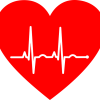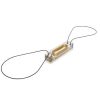The bottom line in regards to compliance with Ministerial Ordinance 169 (MO 169) is quite simple folks. Equipment employed for the monitoring, measuring, testing, and/or inspection of medical devices must be properly maintained and calibrated. Dr. D will let you in on a little secret; this requirement applies to your suppliers as well. Few things are more frustrating than having a supplier provide non-conforming product only to find out that the supplier has no clue in regards to basic metrology concepts. Even worse, a supplier does not see the value in calibrating their tools because of the added expense; and develops a lame approach to calibration in an attempt to rationalize their poor judgment. If you want to see the doctor’s “Mercurial” (look-it-up) temperament swing from pleasant to just plain nasty, have an organization’s failure to calibrate their measuring equipment result in a product recall for one of my clients. As John Fogerty, of CCR fame, would say; “I see a bad moon rising.”
(Control of Monitoring and Measuring Devices)Article 53 The manufacturer, etc. shall determine the monitoring and measurement to be undertaken and the monitoring and measuring devices needed to provide the evidence of the conformity of the products to the determined requirements.2. The manufacturer, etc. shall establish the documented procedure to ensure that the monitoring and measurement specified in preceding Paragraph 1 can be carried out and are carried out in a manner that is consistent with the monitoring and measurement requirements.3. Where necessary to ensure valid results, the manufacturer, etc. shall ensure that the measuring equipment meets the following requirements.
- To be calibrated or verified at the specified intervals, or prior to the use, against the measurement standards traceable to the measurement standards (in case where no such standards exist, the basis used for the calibration or verification shall be recorded),
- To be adjusted or re-adjusted as necessary,
- To be identified to enable the calibration status to be determined,
- To be safeguarded from the adjustments that would invalidate the measurement result, and
- To be protected from damage and deterioration during the handling, maintenance and storage.
4. The manufacturer, etc. shall assess and record the validity of the previous measuring results when the equipment is found not to conform to the requirements.5. The manufacturer, etc., in case where they correspond to the case specified in preceding Paragraph 4, shall take appropriate action on the equipment and for any of the products affected.6. The manufacturer, etc. shall ensure that the records of the results of the calibration and verification are maintained.7. The manufacturer, etc. shall ensure that, when used in the monitoring and measurement of the specified requirements, the ability of the computer software to satisfy the intended application is confirmed prior to the initial use and reconfirmed as necessary.
- Reasonable calibration intervals (hopefully to the manufacturer’s standard);
- The requirement to actually calibrate equipment using standards traceable to a recognized national standard (e.g., NIST in the United States);
- Depict equipment adjustment and readjustment requirements, when deemed appropriate;
- Equipment to be labeled in a manner to quickly ascertain the calibration status (e.g., a Cal Sticker);
- Equipment to be safeguarded from someone making unauthorized adjustments that could invalidate measurement results;
- The Assessment of previous measurement results and the pursuit of appropriate action when equipment is found to be out of calibration or specification tolerances;
- Evaluation of the impact non-conforming measuring equipment has on finished medical devices;
- Maintenance and retention records of all calibration activity; and
- The verification and validation of software, when employed in support of measuring and monitoring activities.
| Table 1.0 – Sample Requirements Matrix | |||||
| Procedure | Procedure Name | Requirement | 21 CFR Part 820 | EN ISO 13485:2003 | MHLW MO 169 |
| 1264-1 Rev A | Calibration of Inspection, Measuring, & Test Equipment | Control of Measuring and Monitoring Devices | 820.72 | 7.6 |
Article 53
|
Until the next edition of DG, when the doctor provides guidance on MO 169 – Chapter 2, Section 6 “Measurement, Analysis, and Improvement” (Articles 54 and 55 – Measurement, Analysis, and Improvement and Feedback), sayonara from Dr. D and best wishes for continued professional success.
References:
- Code of Federal Regulation. (2011, April). Title 21 Part 820: Quality system regulation. Washington, D.C.: U. S. Government Printing Office.
- EN ISO 13485:2012. (2012, February). Medical devices – quality management systems – requirements for regulatory purposes (EN ISO 13485:2012).
- Linguanaut the Japanese phrases and expressions. (2012). Retrieved September 8, 2012, from http://www.linguanaut.com/english_japanese.htm.
- Ministerial Ordinance 169. (2004). MHLW ministerial ordinance 169 on standards for manufacturing control and quality control for medical devices and in-vitro diagnostic reagents. Retrieved June 1, 2012, from http://www.pmda.go.jp/english/service/pdf/ministerial/050909betsu3.pdf.







